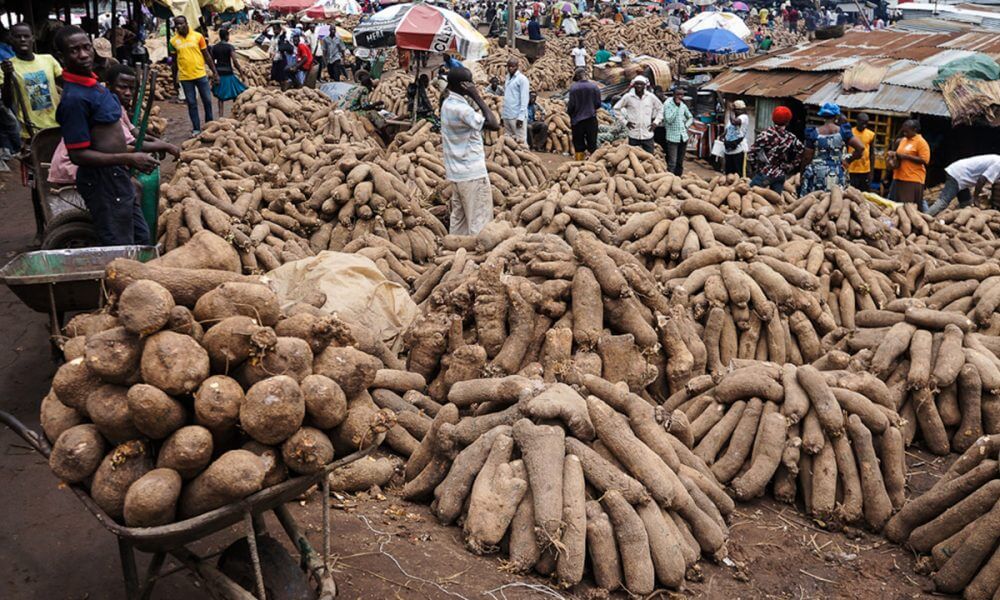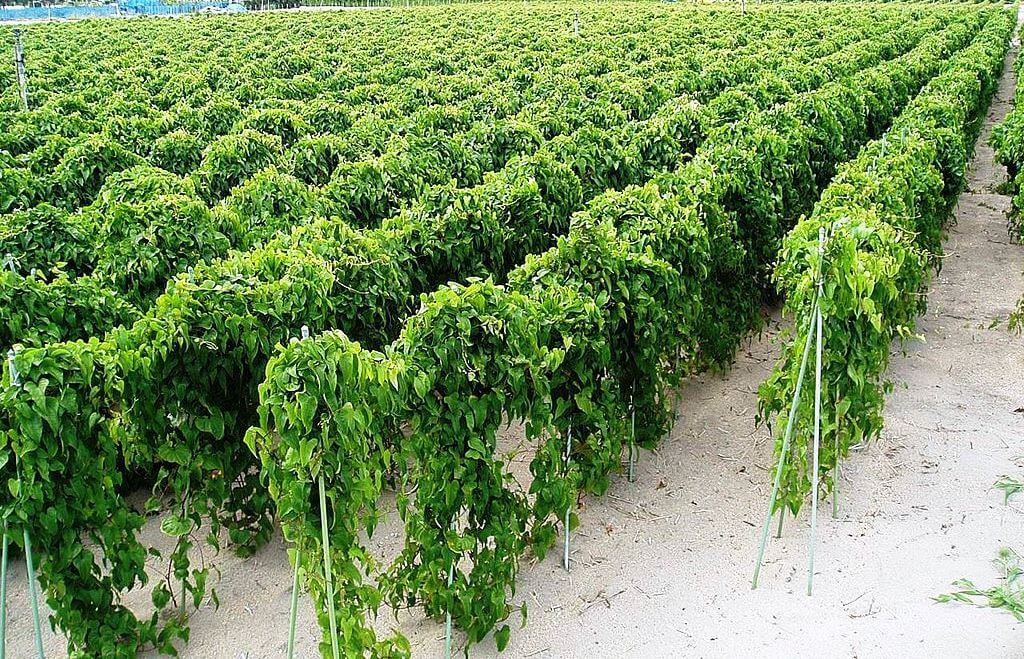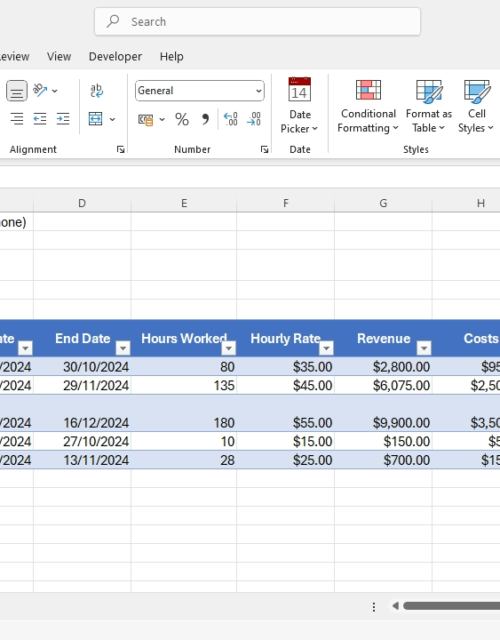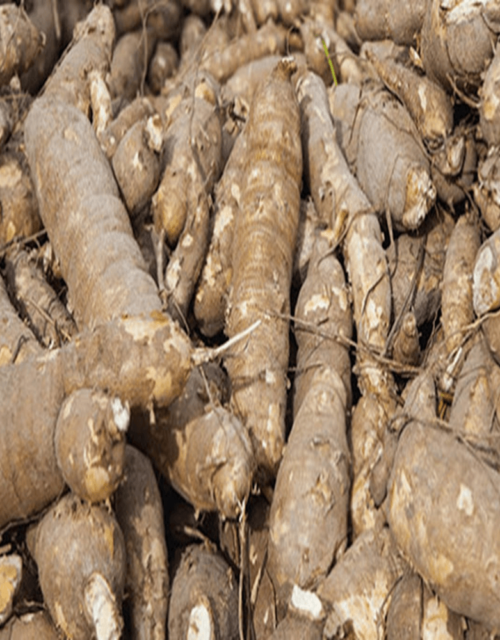Yam Farming in Nigeria: A Practical Guide for Modern Farmers

Yam cultivation has been a cornerstone of Nigerian agriculture for centuries, deeply rooted in the country’s cultural and economic fabric. As we navigate the challenges and opportunities of the 21st century, yam farming continues to play a crucial role in Nigeria’s food security and rural economy.
This comprehensive guide aims to equip both novice and experienced farmers with the knowledge and strategies needed to succeed in yam farming, adapting traditional practices to modern realities.
Table of Contents
Understanding the Yam Market in Nigeria
Nigeria’s yam market is a vibrant and crucial part of its agriculture, with the Zaki Biam Yam Market standing as the largest yam market in the world. This bustling hub not only serves local communities but also attracts international buyers from neighboring countries, highlighting Nigeria’s dominant role in global yam production.

With an impressive output that constitutes about 70-76% of the world’s yams, Nigeria’s fertile lands continue to support this vital crop, which holds significant cultural and economic importance in the region.
Current Market Trends
The yam market in Nigeria has seen significant shifts in recent years:
- Increasing Domestic Demand: With a growing population and urbanization, the demand for yams in Nigeria’s cities has surged. According to Indexbox.io, the yam market in Nigeria has experienced a steady increase in both production and consumption. The total consumption value has been rising at an average annual rate, reflecting the growing importance of yams in the Nigerian diet.
- Export Potential: Nigeria remains the world’s largest yam producer, accounting for about 60% of global production. In 2019, Nigeria produced approximately 16.2 million metric tons of yams. However, export volumes are still relatively low, presenting an untapped opportunity for farmers.
- Economic Impact: The yam market contributes significantly to Nigeria’s economy. The value of yam production in Nigeria was estimated at around $5.654 billion in 2008, and it has continued to grow since then.
- Value Addition: There’s a growing trend towards processed yam products like yam flour and frozen yam, opening new market avenues for farmers willing to invest in post-harvest processing.
- Organic Farming: With increasing health consciousness, there’s a niche but growing market for organically grown yams, especially in urban areas and for export.
Key Statistics
- Production Volume: In 2022, Nigeria produced approximately 61.2 million metric tons of yams, according to the Food and Agriculture Organization (FAO).
- Cultivated Area: Yam farming occupies about 5.9 million hectares of land in Nigeria.
- Yield: The average yield stands at 8.5 tons per hectare, though this varies significantly across regions and farming practices.
- Market Value: The yam market in Nigeria was valued at ₦2.3 trillion (about $5 billion USD) in 2022, with projections indicating steady growth.
Choosing the Right Yam Variety
Nigeria boasts over 60 yam varieties, but not all are equally suited for commercial farming. Here are some popular varieties and their characteristics:
- White Yam (Dioscorea rotundata)
- Most widely cultivated
- High yield potential
- Excellent storability
- Preferred for pounded yam
- Average Yield: Approximately 10-15 tons per hectare.[1]
- Water Yam (Dioscorea alata)
- Fast-growing
- Tolerant to poor soils
- Good for processing into flour
- Average Yield: Approximately 12-20 tons per hectare[2].
- Yellow Yam (Dioscorea cayenensis)
- Rich in beta-carotene
- Growing popularity in health-conscious markets
- Requires more skilled cultivation
- Average Yield: Approximately 8-12 tons per hectare.
- Aerial Yam (Dioscorea bulbifera)
- Drought-resistant
- Suitable for intercropping
- Lower market demand but gaining interest for its sustainability
- Average Yield: Approximately 5-8 tons per hectare[3].
- Bitter Yam (Dioscorea dumetorum)
- Known for its bitter taste
- Easy to cultivate
- Often used in traditional medicine
- Average Yield: Approximately 6-10 tons per hectare.
- Chinese Yam (Dioscorea esculenta)
- Smaller tubers
- High nutritional value
- Less common but valued for its medicinal properties
- Average Yield: Approximately 7-11 tons per hectare.
When selecting a variety, consider your local climate, soil conditions, target market, and available resources.
In addition to the above, there are improved varieties that can boast of higher yields, some of them are:
- UMUDr36 (SharpSharp)[4]
- Average yield: Up to 33 tons per hectare.
- Attributes: Early maturity, high flour production, good boiling and pounding qualities.
- UMUDr33 (Blessing)[5]
- Average yield: Approximately 25-30 tons per hectare.
- Attributes: Excellent boiling quality, good pounding quality, high dry matter content.
- UMUDr34 (Sunshine)
- Average Yield: Approximately 28-32 tons per hectare.
- Attributes: Better adaptation to Southern Guinea Savannah, excellent boiling and pounding qualities.
These improved varieties have been developed to address various challenges such as drought stress, pest resistance, and the need for early maturity. They offer higher yields and better quality, making them more profitable for farmers.
Land Preparation and Soil Management
Proper land preparation is crucial for successful yam cultivation. Follow these steps:
- Site Selection: Choose well-drained, loamy soils rich in organic matter. Avoid waterlogged areas.
- Soil Testing: Conduct a soil test to determine pH and nutrient levels. Yams prefer slightly acidic to neutral soils (pH 5.5 – 7.0).
- Clearing and Tilling: Clear the land of weeds and debris. Till to a depth of 30-40 cm to ensure good aeration and water penetration.
- Mound or Ridge Making: Create mounds or ridges 1 meter apart. This improves drainage and facilitates tuber development.
- Soil Amendment: Based on soil test results, apply organic matter (well-decomposed manure or compost) at 10-15 tons per hectare. This improves soil structure and nutrient content.
- Erosion Control: In sloping areas, implement contour plowing or terracing to prevent soil erosion.

Planting Techniques
Proper planting is critical for good yields. Here’s a step-by-step guide:
- Timing: The suitable period for yam planting in Nigeria varies by region due to differences in climate and rainfall patterns. Here’s a breakdown for different parts of Nigeria:
- South East: February to April. This region benefits from early rains, making it ideal to plant yams as soon as the rainy season begins. The soil is usually well-prepared by the end of the dry season, ensuring good moisture levels for yam setts to sprout.
- Middle Belt (Central Nigeria): March to May. States like Benue, Nasarawa, and Taraba are major yam producers. Planting typically starts in March when the rains become more consistent. This region has a longer rainy season, which supports yam growth.
- South West: March to April. Similar to the South East, the South West region, including states like Oyo and Osun, starts planting yams in March. The onset of the rainy season provides the necessary moisture for yam cultivation.
- North Central: April to May. In states like Niger and Plateau, planting begins in April. The slightly delayed start compared to the southern regions is due to the later arrival of the rainy season.
- Riverine Areas: October to December (early crop) and February to April (main crop). In riverine areas, yams can be planted as soon as the floods recede. The main crop, which is rain-fed, is planted when rainfall becomes regular to avoid the setts drying up.[6]

- Seed Yam Preparation: Select disease-free, medium-sized tubers (200-500g) for planting. Cut larger tubers into setts, ensuring each has a portion of the head region.
- Seed Treatment: Treat setts with a fungicide like Mancozeb to prevent rot and improve germination.
- Planting Method:
- Plant setts 10-15 cm deep in the mounds or ridges
- Space plants 1 meter apart within rows and 1 meter between rows
- Place setts with the cut surface facing upwards
- Mulching: Apply mulch around the planted setts to conserve moisture and suppress weed growth.
- Staking: As plants grow, provide stakes (2-2.5 meters long) for the vines to climb. This improves photosynthesis and yield.
Crop Management
Effective crop management in yam farming is crucial for maximizing yield and ensuring sustainability.
Weed Control
Weeds compete with yams for nutrients and can significantly reduce yields. Implement these strategies:
- Manual Weeding: Conduct regular hand weeding, especially in the first 3-4 months after planting.
- Mulching: Apply organic mulch to suppress weed growth and retain soil moisture.
- Herbicides: Use pre-emergence herbicides like Metolachlor or Pendimethalin cautiously, following manufacturer instructions.
- Cover Cropping: Plant leguminous cover crops between rows to suppress weeds and improve soil fertility.
Pest and Disease Management
Yam farming in Nigeria faces challenges from various pests and diseases, which can affect both the yield and quality of this important crop. Notable among these are nematodes, which cause galls on tubers, and beetles that damage leaves and stems. However, with the right management practices, such as crop rotation, sanitation, and the use of resistant varieties, farmers can effectively mitigate these issues.
The resilience and adaptability of Nigerian farmers, combined with agritech innovations, continue to ensure that yam remains a staple food and a vital part of the country’s agriculture.
Common pests and diseases affecting yams in Nigeria include:
- Yam Beetles: Use neem-based insecticides or introduce natural predators like ground beetles.
- Nematodes: Practice crop rotation and use resistant varieties.
- Anthracnose: Apply copper-based fungicides and ensure proper spacing for air circulation.
- Tuber Rot: Ensure proper drainage and avoid waterlogging. Treat seed yams before planting.
Implement an Integrated Pest Management (IPM) approach, combining cultural, biological, and chemical control methods as needed.
Irrigation
While yams are generally rain-fed in Nigeria, supplemental irrigation can significantly improve yields, especially in drier regions. Yams need about 1000-1500 mm of water throughout their growing cycle. Ensure consistent moisture, especially during tuber formation. To supplement rainfall in drier regions, use:
- Drip Irrigation: Most efficient method, delivering water directly to the root zone. Drip irrigation in yam farming involves the slow delivery of water directly to the plant’s root zone, minimizing evaporation and ensuring efficient water use. This method can significantly increase yam yields by up to 50%.[7]
- Sprinkler Systems: Suitable for larger farms but less water-efficient. Sprinkler systems mimic rainfall by distributing water through overhead sprinklers, which is particularly beneficial in areas with high temperatures or sandy soils prone to rapid water loss.
Both systems are valuable for maintaining optimal soil moisture levels and supporting the growth of yam crops in various climatic conditions.
Fertilization
Proper nutrition is key to high yields. Here’s a general fertilization guide:
- Organic Fertilizers: Apply well-decomposed manure or compost at 10-15 tons per hectare before planting.
- Inorganic Fertilizers: Apply NPK 15-15-15 at 400 kg/ha in two splits:
- 200 kg/ha at 1 month after planting
- 200 kg/ha at 3 months after planting
- Micronutrients: Apply foliar sprays containing zinc, boron, and manganese if deficiency symptoms appear.
Always base fertilizer applications on soil test results and local recommendations.
Harvesting and Post-Harvest Handling
Harvesting
- Timing: Harvest 7-10 months after planting, when leaves turn yellow and dry.
- Method: Use specialized tools like yam harvesters or carefully dig around the mound to avoid damaging tubers.
- Sorting: Separate damaged or diseased tubers from good ones immediately.
Post-Harvest Handling
- Curing: Store harvested yams in a well-ventilated, shaded area for 2-3 days to allow cuts to heal.
- Storage: Store in well-ventilated yam barns or modern storage facilities. Ideal conditions are 28 – 30°C with 60 – 70% relative humidity.
- Value Addition: Consider processing into yam flour, chips, or frozen yam to access new markets and extend shelf life.
Marketing and Sales Strategies
- Local Markets: Build relationships with market women and wholesalers in nearby urban centers.
- Cooperatives: Join or form farmer cooperatives to improve bargaining power and access larger markets.
- Contract Farming: Explore opportunities with food processing companies or exporters for guaranteed sales.
- Digital Platforms: Utilize e-commerce platforms and social media to reach urban consumers directly. Put delivery costs into consideration.
- Export Markets: For large-scale farmers, explore export opportunities to countries with significant Nigerian diaspora populations.
Sustainability and Future Trends
- Sustainable Practices: Implement crop rotation, intercropping, and organic farming methods to maintain soil health and biodiversity.
- Climate-Smart Agriculture: Adopt drought-resistant varieties and water-conserving techniques to adapt to changing climate patterns.
- Mechanization: Invest in appropriate machinery for land preparation, planting, and harvesting to improve efficiency and reduce labor costs.
- Research and Development: Stay informed about new varieties and farming techniques developed by research institutions like the International Institute of Tropical Agriculture (IITA) and National Root Crops Research Institute (NRCRI).
Conclusion
Yam farming in Nigeria offers significant opportunities for both small-scale and commercial farmers. By adopting modern practices, leveraging technology, and staying attuned to market trends, farmers can improve yields, increase profitability, and contribute to Nigeria’s food security and economic growth.
Remember, successful yam farming requires patience, dedication, and continuous learning. Stay connected with local agricultural extension services and fellow farmers to share knowledge and experiences.
As you embark on or expand your yam farming venture, may your fields be fertile and your harvests bountiful. Here’s to the future of yam farming in Nigeria! We’re open to contributions and suggestions. Do use the comment box to share your faming experiences.
[1] https://www.agriculturenigeria.com/yam/
[2] https://veggiegrow.ng/yam-farming-in-nigeria/
[3] https://www.agriculturenigeria.com/yam/
[4] https://www.cgiar.org/news-events/news/new-year-begins-with-release-of-new-high-yield-yam-variety-in-nigeria/
[5] https://www.nacgrab.gov.ng/nigeria-releases-21-new-high-yield-crop-varieties-to-farmers/
[6] https://marasafarms.com/learn-agric-blog/agriculture-production/yam-production-in-nigeria/
[7] Studies by Food and Agriculture Organization (FAO) – 20-50%, International Water Management Institute (IWMI) – 50%, Journal of Agricultural Water Management – 30-70%, and World Bank – 20-60%.









